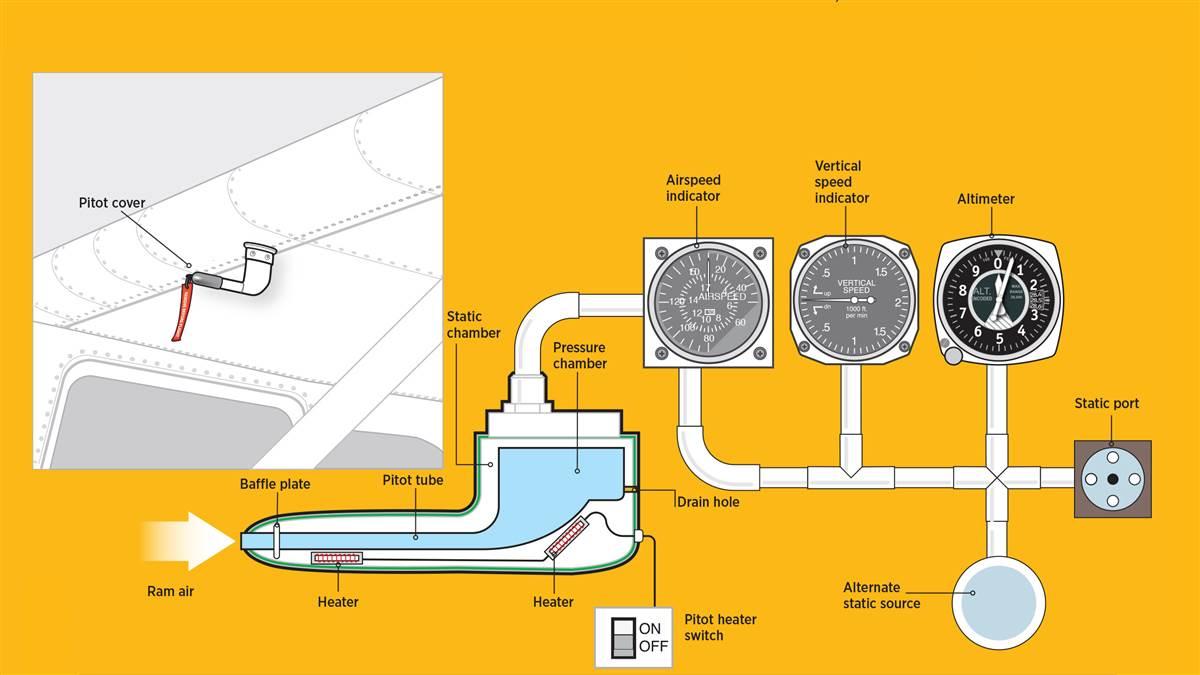
The pitot-static system includes a few components: a pitot tube and one or more static ports—which you’ve likely checked numerous times during the preflight inspection—and the associated lines that run from the pitot tube and the static ports to the airspeed indicator, vertical speed indicator, and altimeter.
You’re checking the pitot tube and static ports to ensure there’s no blockage, because the presence of debris or insects could prevent the pitot tube and ports from doing their job—which is to sample air pressure that in turn is measured by the airspeed indicator, vertical speed indicator, and altimeter.
The pitot tube is usually mounted on the wing of the airplane so that it faces into the relative wind. A small hole in the tube allows impact air pressure—also known as ram air pressure—to enter.
The static ports are attached to the airplane’s fuselage, and they read static air pressure.
The airspeed indicator compares both types of air pressure to provide a readout for the pilot. The airspeed indicator is the only instrument in the pitot-static system that uses both types of air pressure.
The altimeter, which displays altitude in feet, uses static pressure to sense pressure changes.
The vertical speed indicator measures static pressure differential to display rate of climb or descent in feet per minute.



